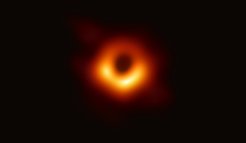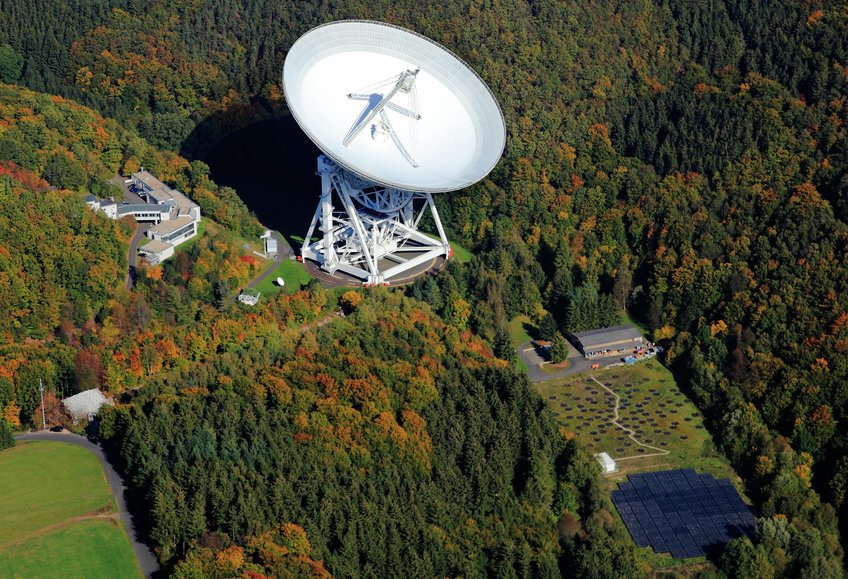Artificial intelligence sharpens the view into space
New research cluster combines radio astronomy and data science in North Rhine-Westphalia

Fig. 1: Aerial view, showing the Effelsberg radio observatory with two telescopes, the 100-m parabolic dish (top center) and the Effelsberg LOFAR station (bottom right).
Radio astronomers use radio waves to study objects in the universe. With increasingly sophisticated observation methods, they look deep into the universe and detect distant galaxies, rapidly rotating neutron stars (pulsars) and black holes. The Effelsberg radio telescope near Bad Münstereifel, Germany, with its 100-meter parabolic dish, is a prominent example for telescopes used that way, which are also connected in local or even worldwide networks to increase imaging sharpness and sensitivity.
Modern radio telescopes are generating data at ever-faster growing rates. "In the next generation of radio telescopes, data will be generated at rates comparable to all of today's Internet traffic," says Prof. Dr. Michael Kramer, director at the Max Planck Institute for Radio Astronomy in Bonn.
Scientists are therefore looking for entirely new ways to cope with this flood of data. "Diligence and large computers are no longer sufficient for that purpose," says Prof. Dr. Frank Bertoldi of the Argelander Institute for Astronomy at the University of Bonn. "Machine learning and artificial intelligence will help researchers in the future to filter out the exciting signals of the universe from the flood of data.
To acquire and exchange the expertise needed for this, radio astronomers and data scientists from eight institutions in North Rhine-Westphalia have joined forces in the "NRW Cluster for Data-Intensive Radio Astronomy: Big Bang to Big Data," led by the Max Planck Institute for Radio Astronomy. The project will receive funding of up to three million euros over the next three years as part of the NRW funding program "Profilbildung 2020".
The essential purpose of the alliance is to network knowledge and coordinate the activities of radio astronomers, interested data scientists and industry partners. "This is a concerted effort that makes us stronger together in research and education, as well as in the transfer of knowledge to practical applications through the exchange with our industrial partners," Michael Kramer and Frank Bertoldi agree. Both researchers are members of the Transdisciplinary Research Area "Building Blocks of Matter and Fundamental Interactions" at the University of Bonn.
------------------------------------------------

Further Information
The participating institutions include the Max Planck Institute for Radio Astronomy, the University of Bonn, the Forschungszentrum Jülich, the Hochschule Bonn-Rhein-Sieg, the Ruhr-Universität Bochum, the TU Dortmund, the University of Bielefeld, and the University of Cologne.
Eight radio telescopes were involved in the observations for the famous image of the shadow of a black hole at the center of the galaxy M87 (Fig. 2), including ALMA and APEX in the Chilean Atacama Desert. For this image, a total data volume of 20 petabytes (20 million gigabytes) was acquired within one week. Half of the analysis of the extensive data set from this observing campaign was done on the special computer (correlator) of the MPIfR in Bonn, with a reduction of the data volume to only 1 megabyte. In the future, the amount of data will be even more extensive. Thus, better and more effective evaluation methods will have to be used for data analysis.

